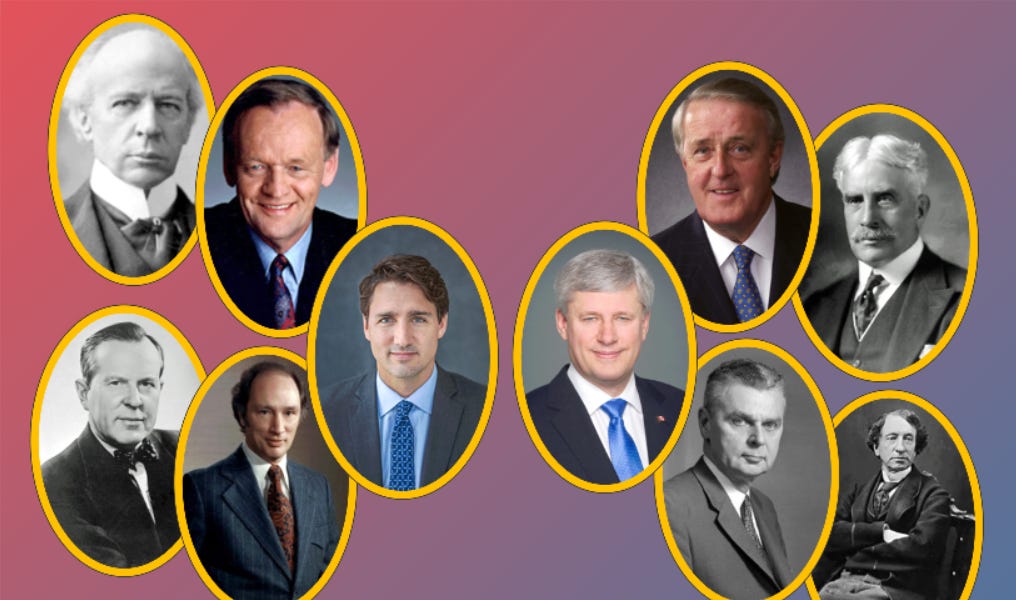Editor’s note: The man in the cover image of this article is Daniel Stoffman (1945-2023), the author of Who Gets In – the book which Brian Graff analyzes in this piece. You can purchase this book here.
Like many homes, mine has several bookcases. I last moved about 15 years ago and frankly, I would say that at least 95 percent of the books on those bookcases have not been opened since then, and then I have even more books in bins and boxes that I have not even set eyes on since then.
There are a few books I have read more than once, a number I have read just once, and ones that I never read but keep meaning to read. The last type are mostly books I inherited, like Churchill’s “A History of the English Speaking Peoples”.
There has been a recent rise in criticism of immigration in the media – though rise is not the right word when it was previously essentially non-existent save for a couple of regular writers. The recent media stories have often lamented something almost identical to this line from a Globe & Mail column: “Canada’s unique, decades-old, pro-immigration consensus has been broken.”
Well, I always felt that this idea of a “consensus” was inaccurate. It is really an elite consensus, or conventional wisdom put forth by our media and politicians, that overstates support for high immigration levels far out of line with our pre-1990 policies.
A Leger poll in 2002 found that 54% of Canadians thought that we accepted “Too many” immigrants in general, 26% said “Not enough”, and 20% were undecided or didn’t know. This was when immigration levels had been between 174,000 and 250,000 a year. No region was above 30% in favour of any increase.
If undecideds were ignored, that means two-thirds of decideds were opposed to higher levels.
Quebec was the province/region most opposed to higher immigration, at 59%. But the English language media conveniently ignores that any consensus really needs to include Quebec, or it is not truly national. It is no secret that for years Quebec has had policies to accept much lower levels of immigrants than their proportionate share.
Leger in 2023 used a different question, and was done online, but found 48% of Canadians wanted fewer, 43% the same, and only 9% wanted more, with no undecided votes. Other pollsters have put the level of opposition to more immigrants around 61% to 67%.
A different question that polled support for specific federal immigration targets had 53% saying “Too many”, and only 4% saying “Too few”.
So, the only consensus is that immigrants, and some reasonable amount of immigration, are not innately bad things – pretty weak tea.
Also in 2002, there were two popular books that criticized Canada’s immigration policy, and both are on my dusty bookshelves: “Immigration: The Economic Case” by Diane Francis, and “Who Gets in” by Daniel Stoffman. Ms. Francis still writes about immigration from time to time, but sadly, Mr. Stoffman died in 2023 at age 78.
News reports state that Stoffman had suffered from Lewy Body disease, which is a form of dementia similar to Alzheimer’s, but faster acting. My own late stepfather had this over 20 years ago, and my family doctor had not even heard of it at that time.
Stoffman was a highly respected journalist and author focused on economics and business – but seems to have stopped writing around 2017, not long after the current Liberal government started making massive changes to immigration policy. I wondered how well “Who Gets In” stands up today, given that Mr. Stoffman was not able to update it or write a follow-up.
He is probably better known for co-writing “Boom, Bust & Echo” with economist David Foot in 1996, which sold over 300,000 copies.
Today’s immigration policy has three main “permanent” streams: economic, family, and lastly refugees and related humanitarian classes. The big controversy recently has been in non-permanent visas, mainly Temporary Foreign Workers (TFWs) and foreign students – these topics were barely mentioned in Stoffman’s book, unlike abuses or issues with the Family class on which we hear little today.
Writers are advised to avoid clichés, but “the more things change, the more they stay the same” is the only way to describe the policies around refugees and asylum seekers. Much has changed since 2002, including the implementation of the Safe Third Country Agreement with the US in 2004, yet refugees are still a major immigration issue.
According to a 2023 CBC story, Canada’s acceptance rate is around 78%, somewhat below the high level of 90% we had at certain points according to Stoffman, but over 6 times higher than the 15% “self-selected” international rate he cited. Stoffman likes the definition of a refugee as “someone who is running for their life” and thinks a better policy would be to take more people from actual refugee camps and fewer who try to come in on their own and apply directly.
Canada’s laws and court decisions surrounding refugee admissions, and the issue of how to determine who is a legitimate refugee, are extremely complex. While Stoffman provides excellent analysis, and our system still seems to let in too many claimants and is prone to abuses or lax interpretation of who deserves to stay, it is hard to make use of 20 year old criticisms when the topic is still extensively covered in the media today.
Where “Who Gets In” shines is in its history of how immigration became so highly politicized, starting in the mid-1970s under the Liberals, with an eye to multiculturalism and pandering to immigrant-dominant communities. Major changes under Mulroney around 1990 and the Liberals again under Chretien are similarly pilloried. He writes:
“It wasn’t until the Conservative government of Brian Mulroney took office in 1984 that the notion of using immigration for partisan purposes gained almost total ascendency. The Tories instigated a massive increase in immigration levels. The total level of 84,000 in Mulroney’s first year in power had climbed to 256,000 by 1993, Mulroney’s last year. Mulroney’s most dramatic departure was to make their high levels permanent. His was the first government in Canadian history to increase, rather than decrease, immigration during a recession. Predictably, this exacerbated unemployment…”
Stoffman argues that public opinion was trumped by “stakeholders”, including many non-profit organizations mostly funded by government grants. Certainly, changes towards more lenient policies in the family class were the results of such lobbying.
However, despite being a journalist with a long history of covering Canadian business, Stoffman seems to miss how much this policy was driven by Bay Street and business in an era when corporate and union donations were still legal, and Canada’s two dominant political parties fed from the same teat.
For most of its history, Canada’s immigration policies were driven by the interests of businesses – railways, mining, forestry, construction, and agriculture in particular. The main exceptions were wartime, the Depression and the 20-year period before Mulroney. An excellent history “Strangers at Our Gates” covers this fairly, and certainly we see this again since 2015 with the corporate funded Century Initiative.
An excellent 1990 Hugh Winsor column in the Globe & Mail stated:
“Immigration Minister Barbara McDougall has won a major cabinet battle by convincing her colleagues that increased immigration will be good for Canada economically and provide the Conservatives with a new source of voters, sources say.
Despite concerns about the social and financial impact of increased immigration and doubts about the country’s ability to assimilate new arrivals at the current rate, Ms McDougall will announce tomorrow that Canada will begin accepting up to 250,000 immigrants a year….
In the short run, Mr. Wilson has to worry about the budgetary impact of up to $500-million in additional costs to the federal government over the five years of the increased immigration. Ottawa currently spends about $135-million a year directly on immigration reception services.
He was also concerned about criticism from provincial governments, which argue that they will be stuck with additional education and social program costs without any offsetting increases from the federal treasury.”
The article cites numerous sources that questioned the actual economic benefits or wisdom of this policy:
“Although the Immigration Department produced a study that emphasized the positive economic aspects of more immigration, other studies questioned the over-all (or macroeconomic) impact…
But a major study of immigration by the Economic Council of Canada questions the overall impact. ECC economist Neil Swan told the Commons committee that his tentative results suggested that “the economic impacts of immigration are not nearly as large as the public generally perceives them to be, whether positive or negative.” He said decisions about immigration should be made on non-economic grounds.”
Stoffman himself was not an economist and didn’t have one as a co-writer this time – a shortcoming of the book is the lack of economic analysis. He also relies heavily on a 1991 report of the Economic Council of Canada: “New Faces in The Crowd: Economic and Social Impacts of Immigration”.
The Economic Council was a government Crown Corporation, created under the Liberals as a think tank when the country really had none. It was disbanded in 1993 by Mulroney to save money, and as there were other think tanks or lobby groups seen as providing perspectives and ideas from outside government ministries.
The 1991 report proposed a number of recommendations, including an immigration rate of 1%, to be slowly phased in over 25 years. But the gains from such growth were shown to be extremely modest, if accurate:
“We estimated that the level of population at which income per person would be maximized in Canada is approximately 100 million inhabitants, with half of the maximum gains being achieved at a population of 40 million. To indicate the size of the gains, if Canada’s population today were 100 million, the average income of Canadians would be roughly 7 per cent higher than it is at the current population of 27 million. Beyond 100 million, the economic benefits would slowly diminish.
This means that for every extra million persons above today’s population of 27 million, GDP per capita would be higher by about 0.3 per cent.”
The analysis seemed to ignore issues such as Canada’s exports being highly dependent on natural resources, which suffer from “declining returns”. This is to say, they are finite, so expanding production means less efficiency on top of there being limited amounts that would be depleted faster.
Also missing is any explanation of why very few countries with a higher population than Canada also have a higher GDP per capita – three in 1990 (Japan, US & France) and two today (US & Germany).
But essentially, the idea that Canada would have to nearly quadruple its population to get a mere 7% total gain in GDP per capita is a pretty damning indication that high immigration is a bad economic policy, even ignoring that this prediction could be overly optimistic, not reliable or not definitive. It would not be surprising if the report’s prediction, which looks 109 years in the future from 1991 (equivalent to a prediction made in 1882 looking to 1991) was flawed in some way.
Stoffman missed this low hanging fruit when it came to the numbers, though he does a good job of explaining other myths around immigration in several key chapters.
The quote above also makes me wonder if this 1991 report was the inspiration in 2015 for the Century Initiative with its 100 million target in 2100. This would mean that the gains from 2015 would be even smaller than 7% – around 3.5%, if half the gains are supposed to happen by 40 million, which we have already reached early.
The chapter “Creation of a Mythology” takes on the demographic and economic myths around the policy, including comments from renowned US economist George Borjas, whose expertise is immigration and is still active today.
Borjas notes that there are winners and losers, and that “There is no immigration surplus if the native wage is not reduced by immigration.”
Also mentioned is Andrew Coyne, then writing for the National Post, who proposed 850,000 immigrants a year and 215 million population, in contrast to Milton Friedman and David Frum who believe wide open immigration would doom the social safety net.
In 1993, the Liberals, Progressive Conservatives and NDP all supported the idea of 1% immigration target. All are criticized for it by Stoffman, who also notes how the NDP was actually supporting a policy contrary to the interests of unions and workers. This has not changed.
There is a great quote in the chapter about the cliché of immigrants doing the jobs nobody wants: “No job ever did not get done if somebody really wanted it done”. This quote is ironically from a former member of the Economic Council. The irony is that the points system doesn’t bring in people for such low wage unpleasant jobs.
The Chapter “The Illusion of Multiculturalism” takes on the broader issue of another policy considered to be based on a “consensus” and that functions as a key justification for immigration. Stoffman attacks this from several angles, including that Canada is not particularly accepting or embracing of multiculturalism where there is a conflict with Canadian norms. The obvious conflict is female genital mutilation (which we surely consider a “barbaric cultural practice” despite attacks on a Harper policy using that term), but also in terms of diet: items that are staples in China, like dog meat, are taboo and illegal in Canada.
There are parts of “Who Gets In” that still offer a lot of value to any reader today. Of course, a lot has changed since 2002, including how the points system has essentially been replaced by the “Express Entry” program. In this program, getting high points above a certain level may not ensure you get in – while some immigrants with key criteria, like French language skills, might get in with far fewer points.
In 2002, the tragedy and implications of the 9/11 terrorist attacks in the US were still top of mind in US-Canada relations; this is less of a factor now of course, but our immigration policy can interact with other policy goals or proposals, and we still need journalists to look into the details and implications.
It’s a shame that Mr. Stoffman was not writing since 2017. His skills and experience on this issue would have been helpful, particularly given that until mid-2023, there were only a couple of journalists or columnists in major newspapers outside of Quebec who were critical of immigration levels.
In the final chapter, also titled “Who Gets In”, Stoffman cites others who were criticizing immigration policies at the time, like Martin Collacott (who is also no longer alive). Stoffman reports on a 2001 Commons committee on Immigration, chaired by Liberal MP Joe Montana, which held hearings across Canada.
The hearing is described with references to US Senator Joe McCarthy and to Stalin. One citizen was called “un-Canadian” for disagreeing with immigration policy, another citizen had his presentation cut short with no questions made about the content. These were not citizens from far-right xenophobic groups, but rather people who clearly seemed to be accepting of diversity in their own personal lives.
But it seems, when it comes to immigration, Canada is like the song lyric: “where seldom is heard, a discouraging word”. Or at least, we pretend to not have heard one.
I hate any suggestion of conspiracy theories. But instead of a “consensus”, our immigration policy looks more like a conspiracy of sorts, in that 3 political parties and nearly all of the English-language mainstream media have been denying an obvious truth for years, and even people who try to convey this truth to Commons Committees don’t get a fair hearing.
So instead of immigration “consensus”, maybe the correct term is one of many I can think of short of the word “lie”: immigration consensus fable, counterfeit consensus, phony consensus, mock consensus, sham consensus, fabricated consensus, invented consensus, concocted consensus, trumped up consensus, or feigned consensus.
Actually, maybe I should follow the example of our political parties and media, and just claim there is already a consensus around my favourite choice: “Canada’s immigration pseudo-consensus”.
All content on this website is copyrighted, and cannot be republished or reproduced without permission.
Share this article!




The truth does not fear investigation.
You can help support Dominion Review!
Dominion Review is entirely funded by readers. I am proud to publish hard-hitting columns and in-depth journalism with no paywall, no government grants, and no deference to political correctness and prevailing orthodoxies. If you appreciate this publication and want to help it grow and provide novel and dissenting perspectives to more Canadians, consider subscribing on Patreon for $5/month.
- Riley Donovan, editor